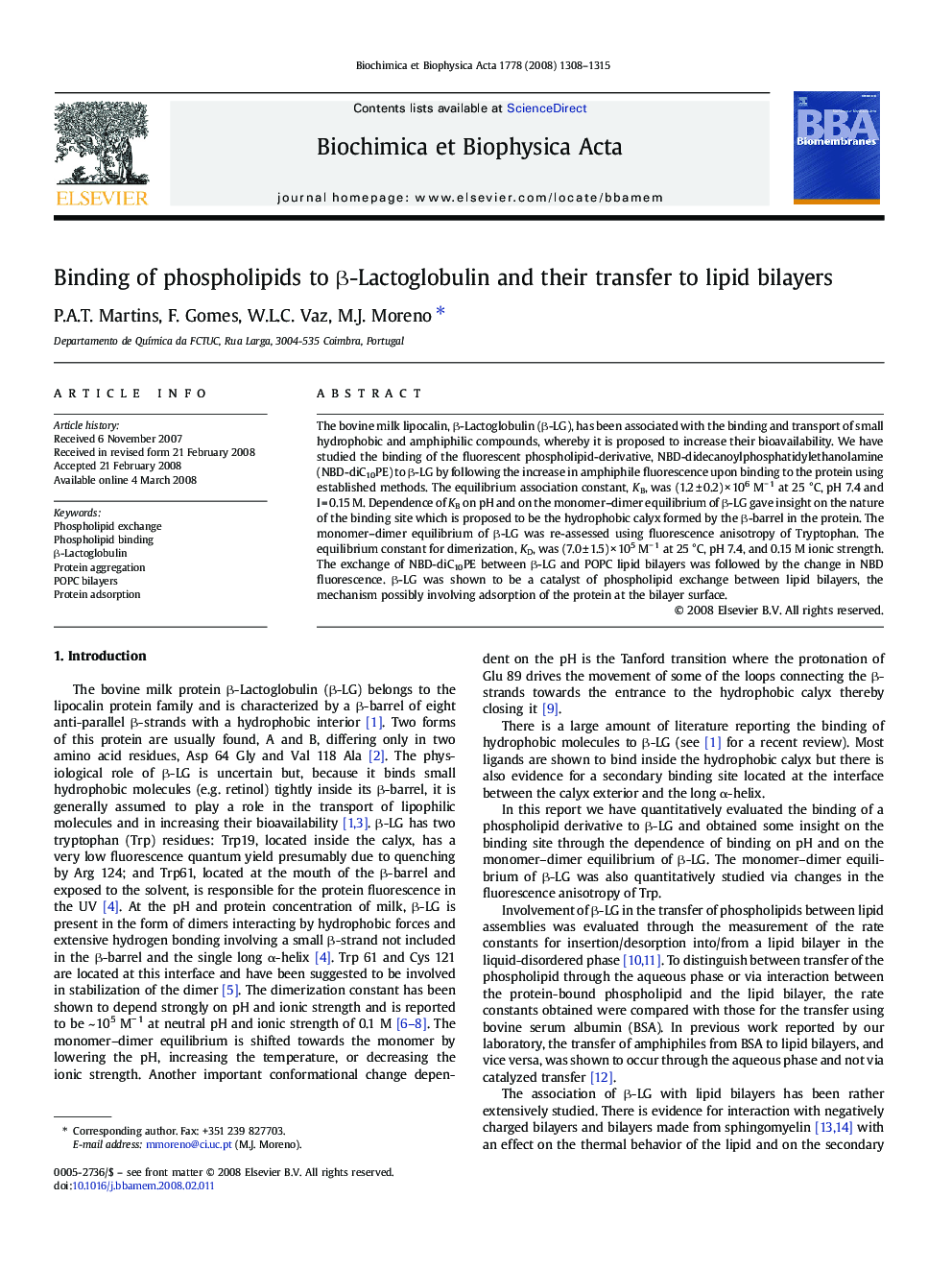| Article ID | Journal | Published Year | Pages | File Type |
|---|---|---|---|---|
| 1945423 | Biochimica et Biophysica Acta (BBA) - Biomembranes | 2008 | 8 Pages |
The bovine milk lipocalin, β-Lactoglobulin (β-LG), has been associated with the binding and transport of small hydrophobic and amphiphilic compounds, whereby it is proposed to increase their bioavailability. We have studied the binding of the fluorescent phospholipid-derivative, NBD-didecanoylphosphatidylethanolamine (NBD-diC10PE) to β-LG by following the increase in amphiphile fluorescence upon binding to the protein using established methods. The equilibrium association constant, KB, was (1.2 ± 0.2) × 106 M− 1 at 25 °C, pH 7.4 and I = 0.15 M. Dependence of KB on pH and on the monomer–dimer equilibrium of β-LG gave insight on the nature of the binding site which is proposed to be the hydrophobic calyx formed by the β-barrel in the protein. The monomer–dimer equilibrium of β-LG was re-assessed using fluorescence anisotropy of Tryptophan. The equilibrium constant for dimerization, KD, was (7.0 ± 1.5) × 105 M− 1 at 25 °C, pH 7.4, and 0.15 M ionic strength. The exchange of NBD-diC10PE between β-LG and POPC lipid bilayers was followed by the change in NBD fluorescence. β-LG was shown to be a catalyst of phospholipid exchange between lipid bilayers, the mechanism possibly involving adsorption of the protein at the bilayer surface.
